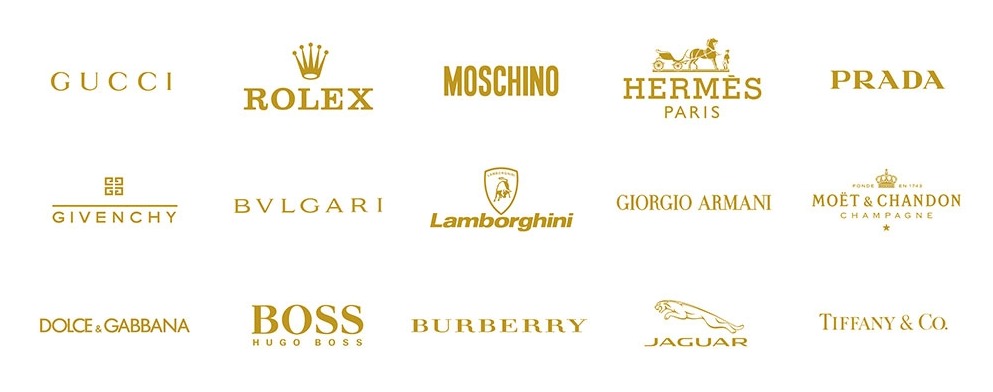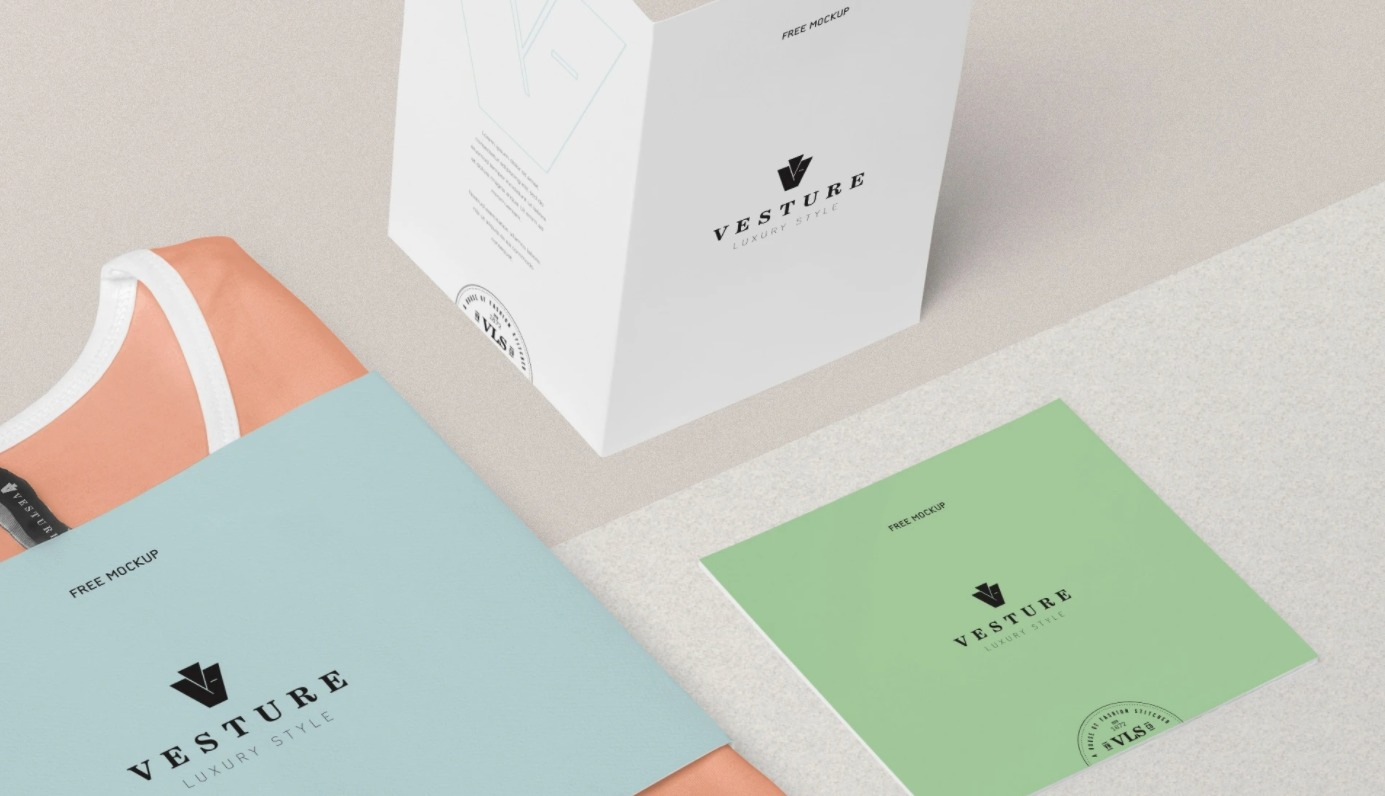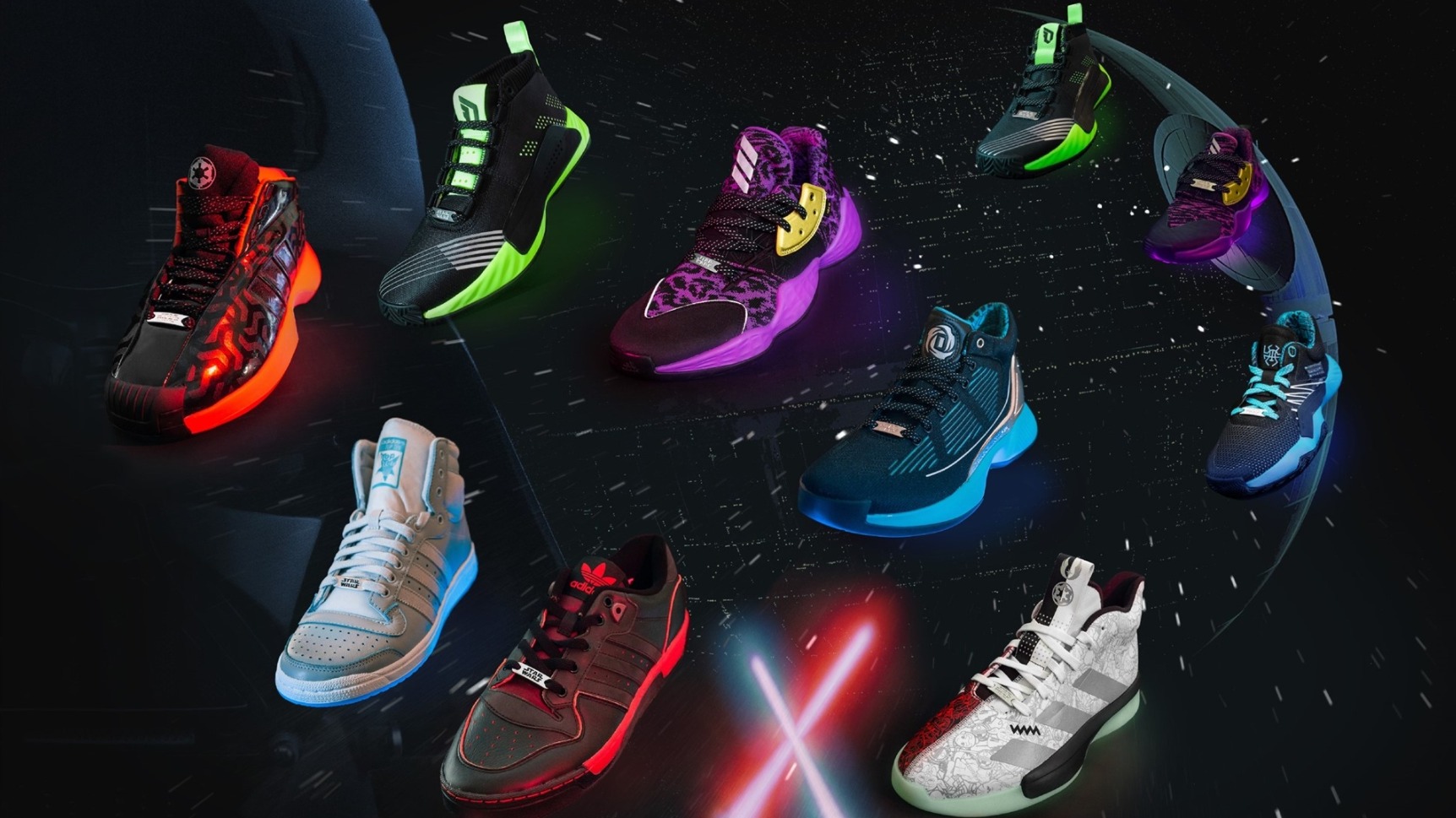How to Create a Fabulous Fashion Branding Strategy?
Hello, if you are here, is a fashion branding strategy what you are looking for? Then you’ve come to the right place; I will guide you to make a perfectly-tailored strategy for your fashion brand to grow and have an unshakable position on the market.
The fashion industry is growing at an incredible speed thanks to the new age of online shopping. According to Statista, the fashion segment’s revenue is expected to reach 589,615 million in 2021, with an annual growth rate of 7.18% each year in the next four years.
Despite this positive growth, it will actually get more challenging for you to make your fashion brand popular. A competitor may pop up right next door without you even noticing.
A good fashion branding strategy will help your fashion products stand out in a treacherous crowd of competition and have a loyal customer base. Let’s put on the fanciest jacket because it may get cold on the top of the fashion world. Just kidding, let’s get started!
How to create a fashion brand?

First, before creating a branding strategy, you need to have a fashion brand in the first place. When creating the structure of a fashion brand, you must define the following aspects.
-
Market niches: Most fashion brands need a niche market to grow because the fashion industry can get saturated fast. Without a niche market to focus on and get recognized, a fashion brand can quickly lose customers.
-
Opportunities: A niche market that hasn’t been explored is not the only opportunity for a fashion brand. But you can also find other opportunities with competitors, products, technology, design, and more.
-
Resources: Your own resources to start a fashion brand like budget, manufacturers, storage, and more.
From there, you can create an action plan of steps that will allow you to execute your brand idea and achieve your goals. You must also specify the brand values that form your company’s identity. Alongside this, questions like what your fashion brand wants to convey and the objectives you want to achieve are also vital.
Besides all this, your fashion brand must also be flexible so that it can adjust and scale to the many changes in your company’s growth.
One especially important factor in building a fashion brand is design. Although the design will depend a lot on the fashion designer’s inspiration and creativity, creating the perfect clothing brand also requires a unique identity of the brand to stand out on the market. Therefore, every piece of clothing must showcase your company style, at least with a recognizable logo.
All this means that you must have an attractive and unique image. Only in this way can your fashion brand grab the attention of consumers. Try to use compelling and attractive designs to gain more fans of your designs. Besides, your brand must also meet the needs of website’s visitors.
Remember, for your fashion brand to be successful, you need to be original, creative, and unique to make a difference in the world of fashion.
Read more: How to build an online fashion boutique with Shopify
What is a fashion branding strategy?

Branding is a long-term plan to personalize products and ensure a balance between a brand’s economic values. A branding strategy has become the dominant competitive advantage for all successful fashion companies in the fashion industry.
A branding strategy aims to make a link between the branded image or form of a product and its character. For example, when people buy a Louis Vuitton bag, they don’t just buy it for the quality but also for a wealthy fashionista’s social status.
A fashion brand’s value is the way consumers end up thinking and feeling about its product.
A better understanding of the fashion brand role begins with the right definition of brand or branding. A brand is a name, logo, design, a set of terms, or a combination of them that aims to identify a product or a service from one company and differentiate it from competitors on the market.
On the other hand, branding activities have been seen as creating a logo and running new advertisement campaigns for many years. But branding is much more than that. A brand is not just an image projection that you can put on a billboard and hope people will fall in love with.
Any brand strategist would tell you that branding is for recalling relations in a consumer’s mind long after seeing the ads or the logo. They will talk about the brand’s personality and form a long-term relationship while the consumer-centered their purchases based on emotional feelings rather than just economic transactions.
When you see the Nike logo on any type of clothing, you immediately think of movement and how you would look running in one of those shirts. That is the power of a fashion branding strategy; consumers wouldn’t even think of another brand before yours.
Why is a fashion branding strategy different from other industries?
Fashion branding is quite different from other industries because the fashion world moves at such a fast pace. You can run one or more similar marketing campaigns for years with industries like technology or automation. Still, fashion products move in very short cycles, so if a brand can’t put its name among the latest trends, it will soon be forgotten.
Therefore, fashion marketers will have to come up with new and creative ways to continually refresh their brands and keep the core elements that make them unique for the fans.
A fashion branding strategy campaign is expected to achieve objectives quickly after launch because users’ feedback rolls in just a few days. But with the help of social media marketing, fashion brands can now stay on top-of-mind of consumers with their products for a longer time.
A good fashion branding strategy will have to balance out the short-term gains and long-term goals. Because of this delicate factor, fashion marketers are often allowed to influence the design of products or even branding elements. Safely to say, fashion marketers are somewhat fashion designers as well.
With a fashion branding strategy, you will have to research the market, choose the right niche, understand fashion trends, and know how your business performs to make the right call. There needs to be a solid and reasonable idea behind a fashion branding strategy. You can’t simply label your brand “luxury” and wealthy consumers would be at your doorstep.
With a creative approach and a well-defined niche, many top fashion brands have found the key to staying on top of the market for a long time with many loyal customers. Let’s see how to create one like them in the next section.
How to create a fashion branding strategy

Remember when young people went crazy over Supreme or Supreme because some celebrities wore their items? Those are the perfect examples of a branding strategy that evokes consumers’ emotions and translates directly into more sales. The emotional connection between respectable influencers and fashion brands compelled customers to see a high sense of value in the brand’s products.
When building your fashion branding strategy, you must consider your organization’s resources and focus on the following variables when executing. Below are critical steps for marketing a fashion branding strategy for your company:
Step 1: Research and analyze the market
Knowing who you are selling to is the first step of any branding strategy. When doing market research, performing quantitative and qualitative research will give you insights into fashion trends, competitive analysis, and customer behavior. These data will be presented in important decisions of your company in product development and branding activities.
In the fashion world, a common phenomenon that everyone knows about is “trends”. When highly valued celebrities endorse a specific brand, it is considered high value in consumers’ eyes. Fashion brands that can ride this popularity can stay on top of the fashion world for a long time, such as Chanel, Dolce & Gabbana, YSL, Gucci, and more.
Also, the research process would give you knowledge about heritage, country, timing, craftsmanship, prestigious people, and fashion personalities. The niche market that you target should appear as a clear picture at the end of this step.
Step 2: Design a brand’s identity
The most important image for a fashion brand to become unique, while projecting a cohesive identity that can both serve as a foundation for following branding activities and differentiate it from other competitors. This is often achieved by creating a story behind the fashion brand so consumers can relate personally and feel eager to wear the designs.
After that, the brand’s logos, images, and copy all have to line up with the lifestyle and characteristics that the brand represents. This is an effective way to create a long-lasting relationship with fashion customers.
Your fashion niche would also play an important role in this step. A dynamic fashion brand that aims to target young gen Z buyers may have an adventurous identity and playful colors, while a luxury fashion brand that wants to attract high-paying consumers may need a sophisticated identity with fewer color choices.
For a cohesive brand’s identity, you need the following elements:
- Story
- Personality
- Logo
- Design guidelines
- Lifestyle
Step 3: Develop and manage branding campaigns
Fashion branding uses creativity and market research to deliver compelling advertisements that resonate with the target audience. These branding campaigns involve many marketing activities, such as promotion on tv, newspapers and magazine articles, offline events, social media ads, billboards, etc.
The brand’s identity will be the heart and soul of these campaigns. Each campaign should keep in mind how it can promote the brand’s image among consumers’ minds, not just attracting more attention or generating more sales.
The structure of a detailed marketing plan with the brand’s identity in mind allows fashion brands to reach their target audience in such a way that creates enthusiasm and interest.
The idea is to grab the attention of consumers and make them feel an affinity for the products you offer. This way they will check out, then buy your product, and even recommend your fashion brand to their friends. As a result, more consumers will be interested in your fashion creation.
Also, you should set the working rules around the payment methods, guarantee, and refunds. This is an important aspect of establishing your brand with the guidelines suitable for the fashion industry. Thus, you can promote the foundations of your fashion brand and what it can do for fashionistas.
Top branding strategies for your fashion brand
Top fashion brands don’t appear out of thin air, they go through years of establishing their reputation. One major reason for their success is an effective branding strategy, followed by creative campaigns and marketing tactics. Once you figure out your fashion branding strategy, you should apply these activities to power your brand’s image.
Personalize the experience
By 2021, more than half of consumers expect some levels of personalization before they even interact with a website. This makes sense since it’s not luck that a buyer found your website. They found your brand through Instagram stories, PPC ads, influencer marketing, search results, and so on.
When it comes to personalization, you want to see the personal touch in these two areas of your fashion brand:
-
The shopping experience
-
Retargeted ads
First, make sure you’re not leaving out changes you can do to personalize the shopping experience with your fashion brand. If your personalization feels natural, it’s able to touch consumers on a personal level. If it feels clunky or awkward, go back to the drawing board.

An easy way to personalize your fashion shopping experience is by incorporating email and SMS marketing. For example, you can alert fashionistas about your latest collections for them or remind them of the products left in their carts. An app like AVADA Email Marketing would be perfect for such a task.
For retargeting ads, you can run ads based on a selection of items the target customer has already shown interest in to reaffirm their choices. This will require you set up Google Ads and Facebook Ads that can track visitor’s information, so make sure you ask visitors about their privacy information preference.
Use influencer to promote the brand
A large part of customers say it’s important for them to read other people’s opinions before purchasing, especially if those are the people they trust.
But you need customers in the first place to buy in order to leave reviews. How can you break that cycle and promote your brand with value-driven content? Investing in influencer marketing is the answer.
A good part about influencer marketing nowadays is that you can select KOLs based on their cost and number of followers. So you won’t need to spend too much money just for David Beckham to wear your brand’s clothes and can target a more relevant audience.
Not only that, influencer endorsements can also create loyal customers. When the fans see how their idols support your products, they believe that your fashion items have high value. And when celebrities wear your items as well, your brand may well be creating a new trend.
Ensure customer’s knowledge
Fashion should be visual and functional. People see your ads of dresses, shirts, pants, or whatever. And they want themselves to look like the person in the ad.
But, of course, an ad is full of more than a model putting on some clothing. Normally it’s a careful selection of models and pieces of clothing, arranged in the right way by professionals, covered with appealing lighting, and more.
So, why not create a style guide for your clothing so your customers can engage with how your items are best worn. A style guide also helps your fashion brand with upsells, because now customers want to complete the look.
You can create style guides for many seasons (spring, fall, winter, summer looks), as well as many types of occasions (first day back at school, interview, wedding, and so on).
Collaborate with other fashion brands
Competition doesn’t mean enemies, fashion brands in your industry can be the key to successful fashion branding too. When you collaborate with other brands or artists, you are able to tap into their markets and present your brand to a wider audience.

You can see many examples in the shoe industry. Many brands and artists have collaborated with Adidas to deliver cool new kicks, such as Yeezy, Superstar, Boost, and more. These works help extend the brand’s items and increase invisibility.
Increase brand loyalty
One of the best strategies to promote your fashion brand is through customer loyalty. If your buyers are eager to tell their close friends about your products, you have a high chance of selling more. So you should have a referral system that lets people share your products easily. A good referral fashion program encourages customers to post good words and receive more rewards.
A simple way to do this is by providing referral links so people can share your brand on social media. Who signs up through the link can get a discount and people who share the link can get a monetary reward. A community can be built by this method and let consumers get discount codes when signing up as friends.
Wrapping it up
The fashion industry is ever-changing, but one element sits at the intersection of multiple successful fashion brands: the branding strategy. I hope this guide helped you create a fashion branding strategy that suits your company. If you find yourself short on ideas, just look at fashion brand house names like Gucci, H&M, Zara, Prada, etc., for inspiration.
Feel fancy enough to present your fashion brand to the world? You can share your fashion branding strategy in the comments and I will help you review it. Thanks for reading!
New Posts






